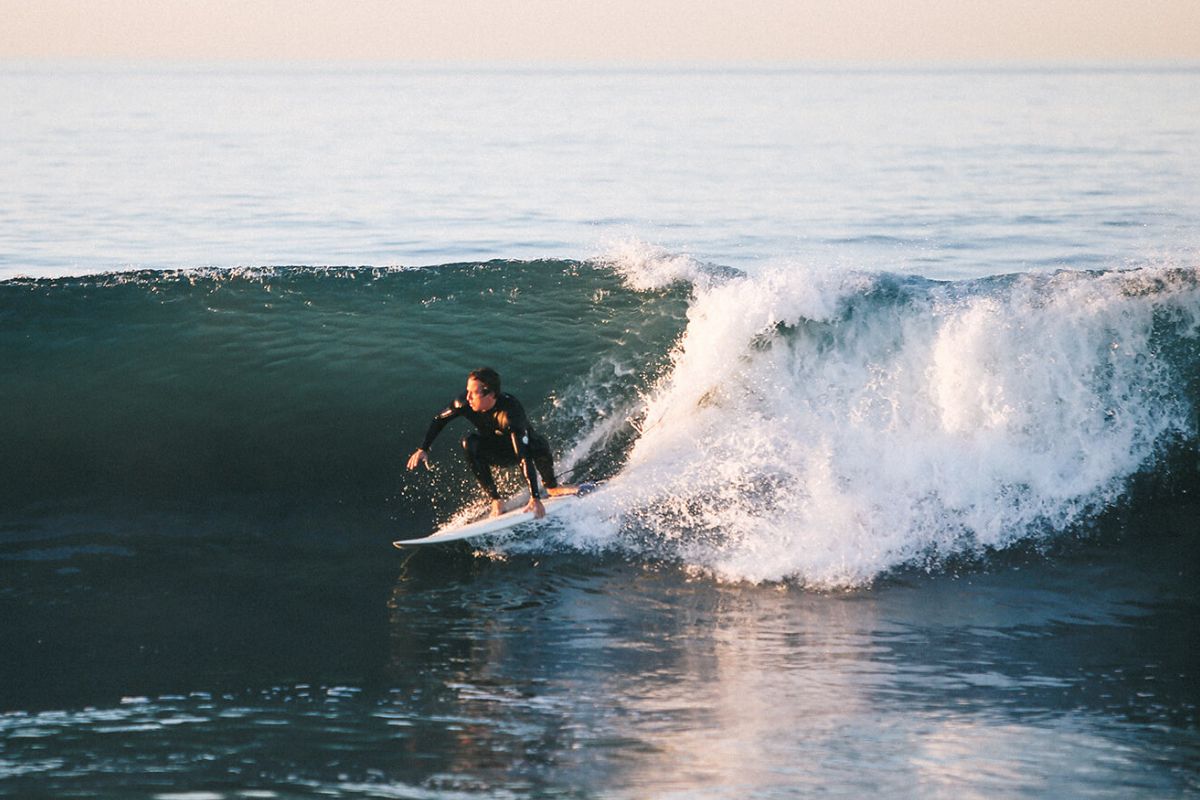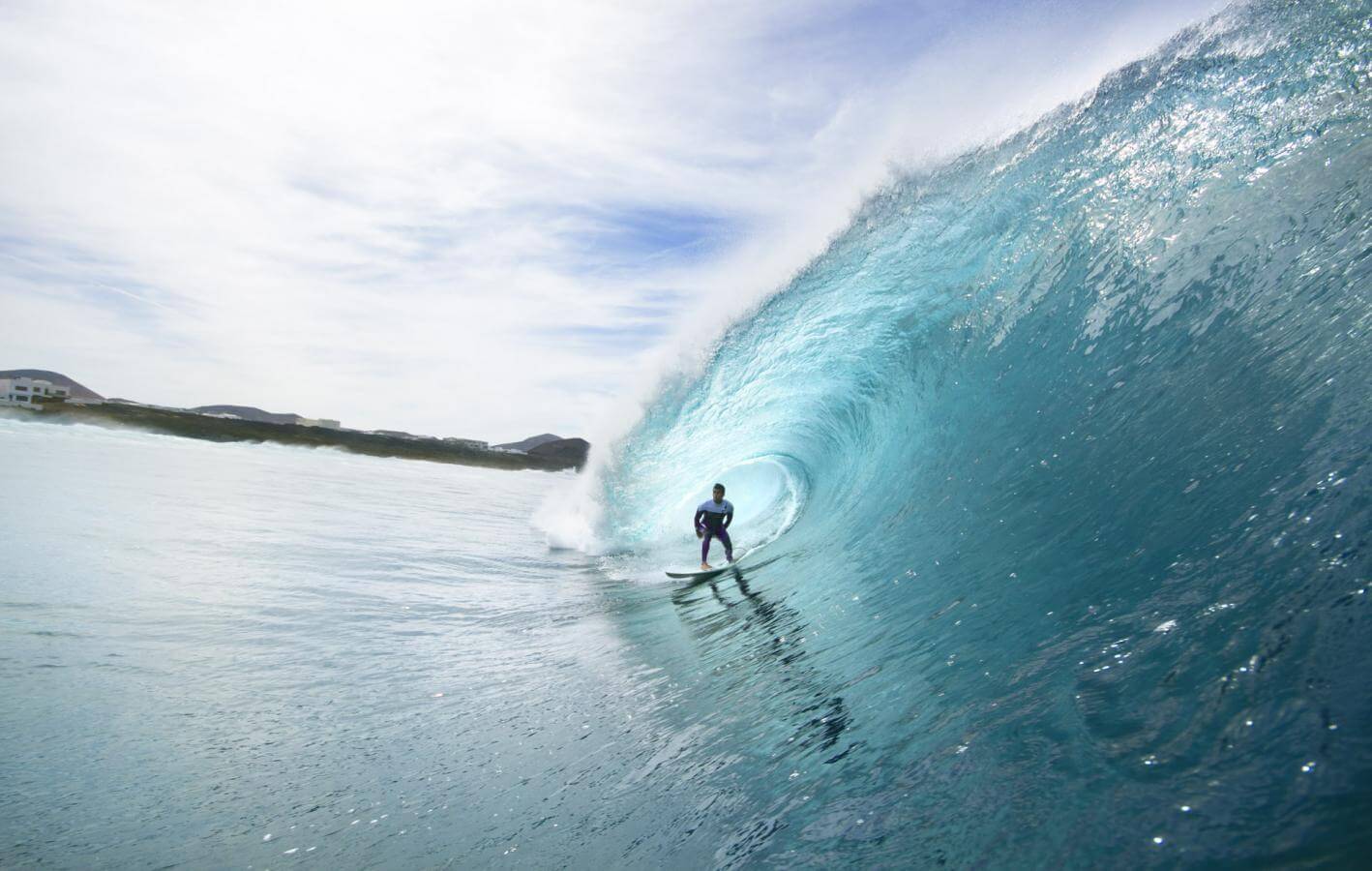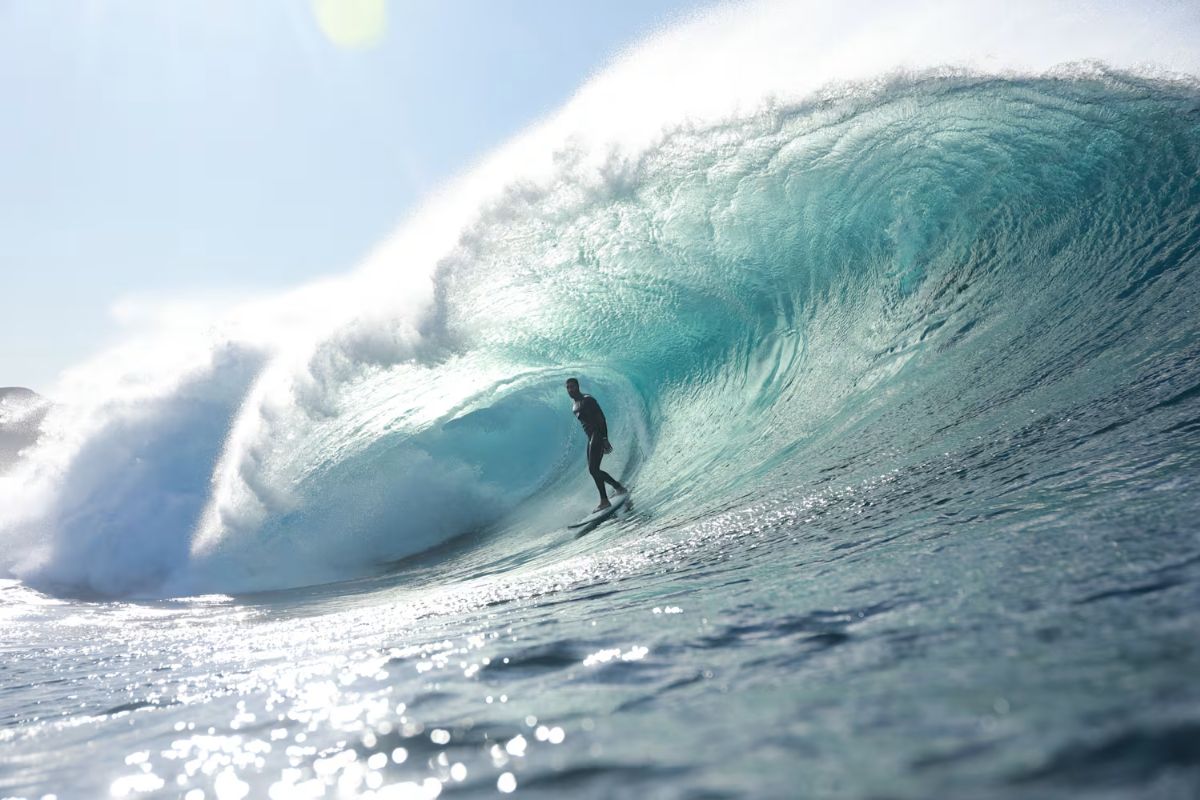The history of surfing, how and where was it born?

Knowing the history of surfing implies understanding why it is such a popular sport today. Let’s see how this discipline was from its beginnings.
But first, if you are interested in learning how to surf for real, we have been surf school Lanzarote for more than 20 years in a fantastic place called Famara. If you are interested in this sport, feel free to contact us.
History of Surfing, the origin: Peru and Bolivia, 16th century
Although we now consider Hawaii to be the most iconic surfing spot in terms of history, the reality is that the sport does not have a very clear origin. That is to say, there are not many written documents attesting to it, while historians do not quite agree on the existing versions.
As it is a really old sport that evolved over time, it is difficult to give an exact date. However, what can be said is that it was European travelers who first encountered this discipline, so it is important to reconstruct its past.

Today, it is a sport that is practiced almost everywhere in the world. The most developed surfing industries are in Australia, Europe (especially Spain and France) and the United States. However, it is also important to see that, for the beginning, we must move to South America.
The first thing we can say is that there was an element known as the caballito de Totora, which is a type of boat, built with stems and leaves, created for fishing in Peru and Bolivia. However, it was also used to glide over the waves in a similar way to surfing, being in the sixteenth century when we talk about a protosurf.
Origins and history of surfing: Hawaii, 18th century
This situation was described by the Spanish anthropologist Fray José de Acosta, who wrote about the cultures of the indigenous people of Peru, describing this activity on the caballitos de Totora, referring to them as “neptunes that cut the waves of the sea”. This monk wrote it in his book “Natural and Moral History of the Indies”, which was found published at the end of the 16th century.
At the same time, we know that by the 18th century, almost 200 years after the writings about the Totora horses, a crew led by the British navigator James Cook appeared. There they also wrote about the art of gliding on water, which had been observed in some tropical islands.
James Cook, known for “discovering” the Hawaiian Islands, spent time with his crew in this place. This allowed him to learn about their way of life, understanding many of the customs of the indigenous people. This included, of course, surfing.

This activity was called he’enalu in Hawaiian, which means “sliding on the waves”. The leader of the indigenous people of the island, called kahuna, was the one with the best board, which was made from the wood of the best tree. At the same time, it was an elite sport, since the best beaches on the island were reserved for the nobility, while the lower classes were not allowed to surf. . It was a sport of reputation, designed for the upper class..
Although the first traces of surfing as we know it today were found in Hawaii, it is thought that they were not the creators of this practice. In fact, most of the inhabitants came to this territory from other islands in the Pacific Ocean, especially those related to Polynesia. This is why it is thought that it was in that place where surfing as we understand it today began.
However, there were also some important differences. Mainly, we know that the surfers of that time caught the waves lying down, unlike today. In addition, it is assumed that it was a method to bring fish to shore, that is, to speed up fishing and seeing this activity as a food necessity, and not just for fun, that is, as a sport.
Disappearance of surfing between the 19th and 20th centuries
Since the beginning of the 1800s, with the arrival of Christian missionaries to the island, surfing, as happened with so many other traditions, ended up with a ban in the Hawaiian territory for being considered immoral. That is why, at this time, the culture of the territory tends to disappear with the arrival of foreign population.
The fact that the Hawaiian way of life has become extinct is due to the imposition of European culture, in addition to the large number of diseases brought by ships to the islands and the prohibition that existed with respect to indigenous customs. Thus, over the next 150 years, Christian missionaries almost wiped out all traces of the sport on the water.
We saw that, throughout this stage, the strict culture of the Calvinist monks who inhabited the island was strictly religious, in addition to being complemented by work, so there was no room for sports and leisure activities, such as surfing, already installed in their vision as a sport. In addition to the decline of the indigenous population, which only accounted for 30% of the total population of Hawaii, we already know that surfing was only practiced by a brave few.
Surfing renaissance, the resurgence in the 20th Century
However, this prohibition would not last long. Since the twentieth century, the custom of sliding on waves with wooden planks on Hawaiian beaches was resumed. This happened through a group of descendants of ancient Hawaiian kings, who wanted to start this recovery of their customs.

Among them, we could highlight Duke Kahanamoku, considered the most important father or personality of modern surfing. Throughout the 1920s, we saw that Duke was an Olympic swimmer, as well as one of the managers of the first surf club on the Hawaiian beach of Waikiki, holding a large number of events that became popular, making it spread to Europe, Australia and the USA, all through his travels around the world.
This is why since the 30’s this sport began to become popular on the beaches of California. That is the time when they began to hold major surfing championships, creating, for example, the first sports magazines specializing in surfing.
At the same time, the sport began to professionalize, something that could be seen in the surfboards that improved, in addition to the incorporation of a surf keel to the bottom of the board, an innovation that was in charge of Tom Blake. The keel allowed those now considered sportsmen to perform turns and maneuvers while surfing the wave, being one of the main materials of the sport that were added, in addition to the appearance of neoprene.
On the other hand, we know that between 1939 and 1945, due to the Second World War, there was a quite shocking stoppage in the practice of this sport. However, it was also useful for many sailors, who had been assigned to the Pacific, to learn of its existence. Then, during the war, other materials used later in the sport were discovered. When the war ended, surfing was already extremely popular.
Closer to these times, we saw that in the 1960s a musical and film culture emerged around the sport. We could see this in relation to films, such as Gidget, as well as groups like the Beach Boys, who spread surf culture throughout California and the rest of the world. It is considered the “golden age” of surfing, with the development of shorter boards, the appearance and use of new materials for manufacturing, as well as a surfer culture that has continued to the present day. In addition, in the early 60’s longboards were created, ideal for performing tricks.

Ten years later, in the 1970s, surfing began to become popular in Europe, and the first wetsuit was created. Two fins were also used, allowing for sharper turns and much more delicate and complex maneuvers. From that date on, world competitions began to be held, demanding more preparation for the competitors.
This allowed that, at present, there are three main territories: Hawaii, Australia and California.
We hope you have enjoyed the history of surfing! And if you are interested in learning, do not hesitate to sign up for our surf lessons in Lanzarote. Also on this website cursosdesurf.com you can find two of the best schools where you can sign up.
Related articles

The Best Surf Guide: Gran Canaria
Whether you are a beginner or an advanced surfer, this Gran Canaria surf guide offers everything you need to get the most out of your experience: spots, tips, conditions and more.

The Best Surf Guide: Lanzarote
Whether you are taking your first steps in surfing or you are an experienced surfer, this complete guide to surfing in Lanzarote will provide you with all the information you need so that you don’t miss a single detail during your visit.

The Best Surf Guide: Canary Islands
Looking for waves? There are plenty of them here. The Canary Islands have it all: eternal climate, otherworldly landscapes and endless surfing beaches. In this surfing guide we tell you where, when and how to get into the water without missing anything.
